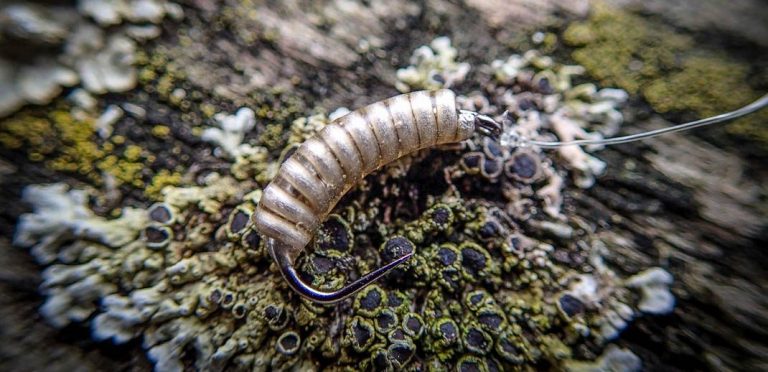Fly fishing thrives just as much on pushing the boundaries of what is possible with new fly tying materials, technology and products as it does on celebrating the past history of the sport.
I was recently sent a new breed of fishing fly from Richard Fieldhouse at Barbless Flies, one of our advertisers on our UK Fly Fishing Forums. He was keen for me to see and try out a selection of his new ‘Ceramic’ nymphs designed for trout and grayling fishing and tied by Stanislas Freyheit for Barbless Flies.
Ceramic flies are a new introduction to the UK (but they originate from France where they have been successfully used for both grayling and brown trout). They are made with either aluminium wire (for the maggots) or lead wire (for the grayling selection) which is then coated with a polymerized UV cure to provide their hard ceramic shell. The surface of the body is totally smooth and aids the flies in sinking faster than regular flies.
The body of the flies display alternate clear and dark rings which imitate the caddis and mayflies larva’s found in UK rivers.
Barbless Flies supply these ceramic maggot’s in one size (14’s), their tungsten equivalent is: Size 14 Ceramic Maggot = 0.8mm Aluminium Wire = 0.090g = 1.5mm Tungsten Bead.
The ceramic grayling nymphs come in two sizes (14’s & 18’s), their tungsten equivalents are: Size 14 Ceramic = 0.8mm Lead Wire = 0.175g = 2.5mm Tungsten Bead
Size 18 Ceramic = 0.5mm Lead Wire = 0.065g = 1.5mm Tungsten Bead
Never one to turn down a challenge I took them down recently to a stretch of the lovely River Dever in Hampshire to seek out some late season grayling.
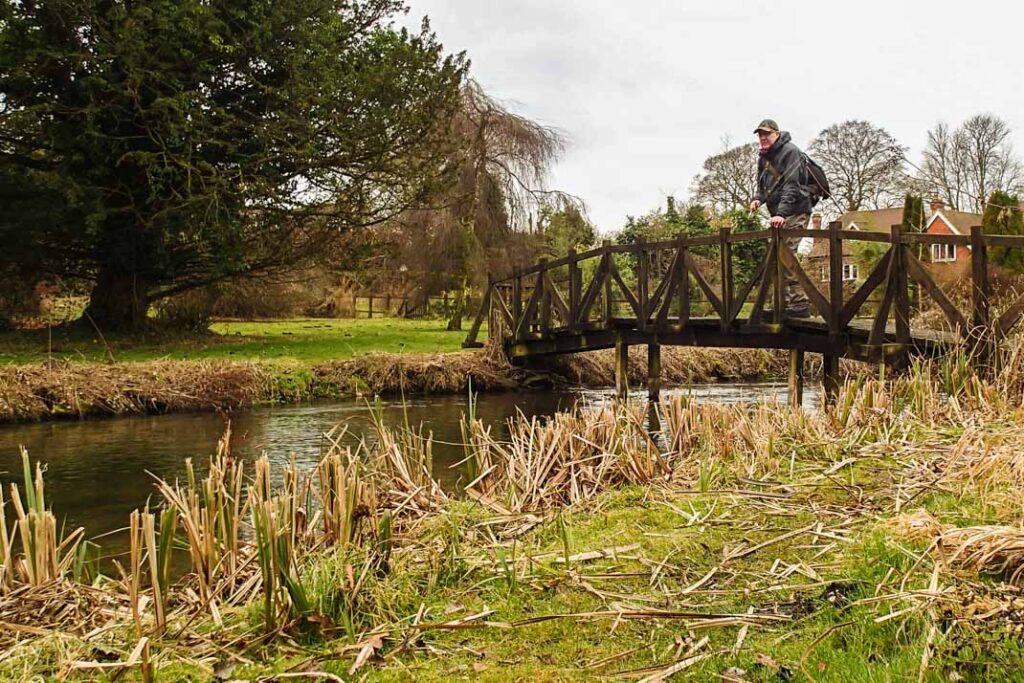
This is a beautiful little private syndicate water surrounded by countryside and a nice mix of shallow riffles, deep runs and a couple of weir pools. On the day I visited skeins of wild geese wheeled around the valley, several water voles ‘plopped’ into the water as I approached and the bank voles and other small mammals in the undergrowth were working non-stop all day it seemed judging by all the rustling going on. The over-wintering trout that I was trying very hard to avoid were fairly easy to spot but the grayling were tougher.
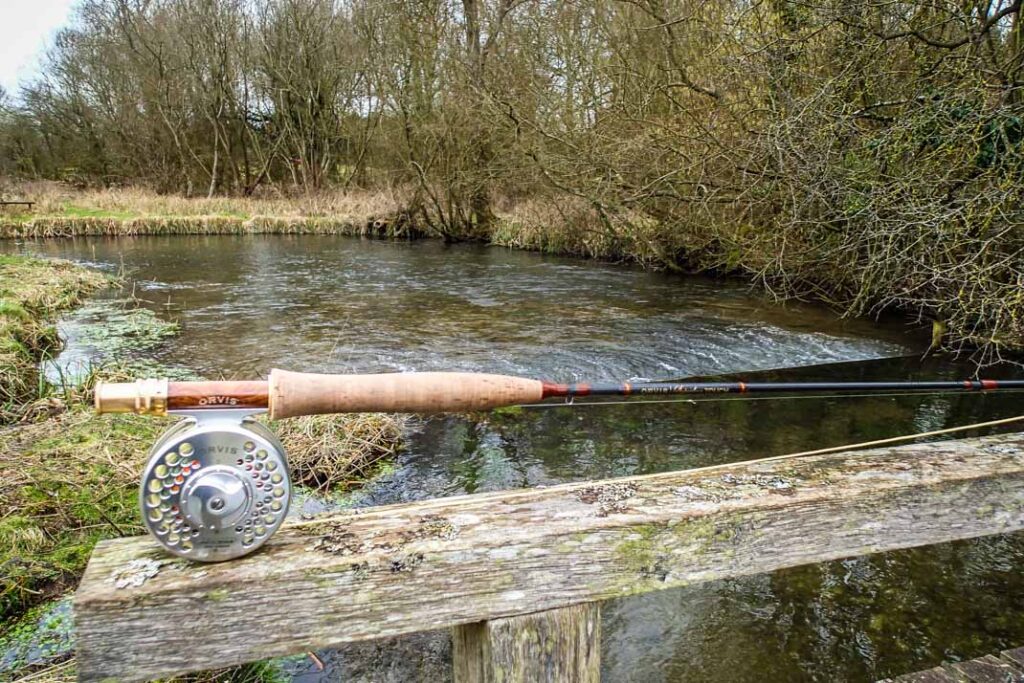
Now I could have tied on a bobber or fished a duo to search out the deeper holes but as I said I am very keen at this time of year personally to leave any brown trout alone as far as I can and without doubt I would have hooked some. There is also the fact that I tend to have a masochistic streak in me I think and like the challenge of only watching the leader and line for indications of a take.
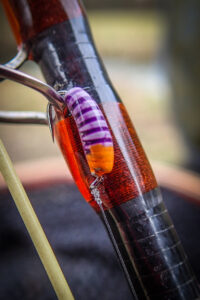
The beat is about a mile long and I spent my time working up it a couple of times during the day with a break for lunch in between. Despite my best efforts a couple of trout still came my way which were unhooked quickly in the water, very easy with the barbless hooks of course. At the very top of the beat I came across some grayling holding station in some faster shallow and very clear water but there was no cover for me or them so I although they got to see both the Ceramic Maggot (as in the main photo) and Ceramic Grayling (two tone) patterns they remained tight-lipped.
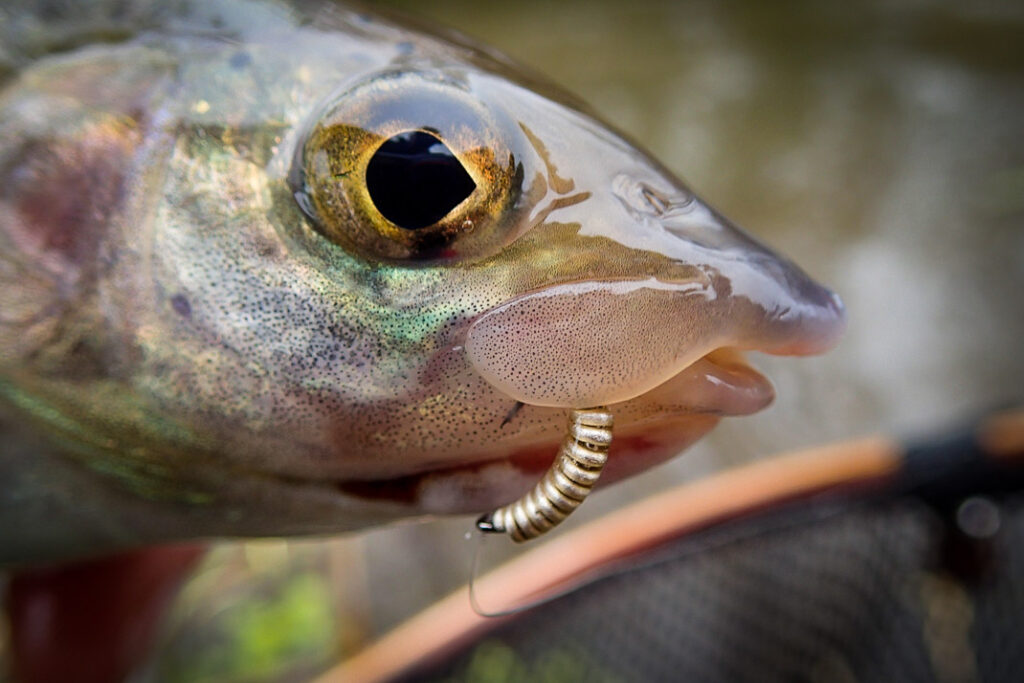
Returning to a couple of fish I had spotted earlier I put the ‘Ceramic Maggot’ back on and made a couple of casts towards where they were finning gently in the current. This time there was no hesitation as one of them scooted over to suck in the fly as it was about to go past. Not a big fish but a very welcome one, especially when you see the rainbow of colours that showed up on it in the close-up shot above. Mission accomplished!
If you’d like some of these for your trout or grayling box then click through to the Barbless Flies website at https://www.barbless-flies.co.uk and order some today.

